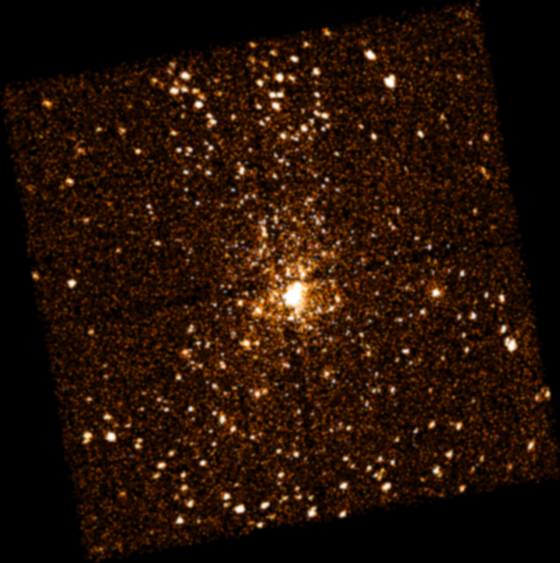
 Credit: NASA/Penn State University
Credit: NASA/Penn State University
Revealing Young Stars
NASA's Chandra X-ray Observatory has resolved nearly a thousand faint
X-ray-emitting stars in a single observation of young stars in the Orion
Nebula, a nearby nursery of young massive stars. Young stars, such as
those found in Orion, are known to be much brighter in X-rays than
middle-aged stars such as the Sun. The elevated X-ray emission is thought
to arise from violent flares in strong magnetic fields near the surfaces of
young stars, though the exact mechanism is not fully understood. The Sun
itself was probably thousands of times brighter in X-rays during its first
few million years. X-ray images can help astronomers to study this
activity, and to identify newly formed stars. The X-ray image above,
obtained by the Advanced CCD Imaging
Spectrometer (ACIS) shows about a thousand X-ray emitting young stars
in the Orion Nebula cluster. The region shown in this image is about 10
light years across. The bright stars in the center are part of the
Trapezium, an association of very young stars with ages less than a million
years. The dark vertical and horizontal lines, and the streaks from the
brightest stars are instrumental effects. The ACIS team studying the Orion
X-ray source includes Profs. Feigelson and Garmire and research scientists
Patrick Broos, Leisa Townsley, and Yohko Tsuboi at Penn State; Steven
Pravdo at the Jet Propulsion Laboratory; and Lynne Hillenbrand at the
California Institute of Technology. More information is available in the press
release.
Last Week *
HEA Dictionary * Archive
* Search HEAPOW
* Education
Each week the HEASARC
brings you new, exciting and beautiful images from X-ray and Gamma ray
astronomy. Check back each week and be sure to check out the HEAPOW archive!
Page Author: Dr. Michael F.
Corcoran
Last modified February 27, 2000


